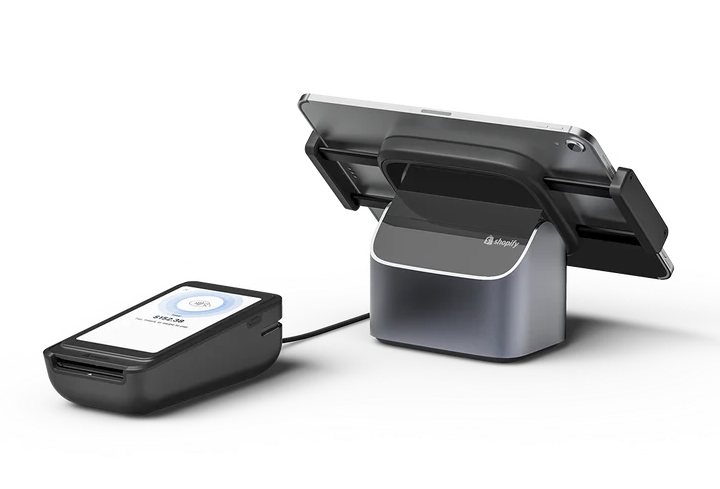This week saw the fifth Shopify Editions and the largest yet with 150+ product updates. The theme of this Editions was “UNIFIED” with Shopify continuing from the previous FOUNDATIONS edition and this year's priority of bringing together everything commerce under one Shopify roof.
“But no matter how many capabilities we build for merchants, we unlock exponential opportunity when everything works together seamlessly, as a unified whole. So this Edition, we're unifying our platform pixel by pixel. Refining and redefining in service of scalability.”
Shopify's VP of Product, Glen Coates
As part of this unification, many products have been launched, rebuilt and reimagined, here is what stood out to us, with updates that impact the enterprise retailer.
[Shopify] Markets Reimagined
Shopify Markets is now known simply as Markets, a central command center to manage international selling, B2B, and in-person from a single location within the Shopify admin. This is a big consolidation and simplification of the configurations that were previously available in Shopify, as well as adding more granular control over the content of products within each market. It's another large step forward for Shopify’s large international customer base.
Catalogs have also been updated to work across Retail point-of-sale (POS) and International so you can manage all your products, availability and prices from the product page, allowing seamless management both within the Market itself, or within the Product section within the Shopify admin. This enables you to preview the exact list of products and prices, or the exact version of your PDP that a specific buyer in a specific market would see.
Shopify Markets got a MAJOR overhaul with this Edition.
— Harley Finkelstein (@harleyf) June 24, 2024
Now, Markets is a central command center where you can manage international selling, B2B, and in-person from a single location in the admin.
You can also create really customized buyer experiences for any market you sell… pic.twitter.com/tRQ6yx28o8
Something that has been teased for a while, and is now a reality is the ability to run multiple Shopify Payments accounts tied to each of your business entities within one Shopify store, making it easier for large international brands to run a single store setup.
Another small but important functionality added to meet EU directives, allowing increased pricing transparency in the EU and Switzerland by displaying the price of a product by unit, for example, price per kilo.
Analytics Rebuild
It certainly seems that the (re)launch of Markets has been a catalyst for other major changes within the Shopify platform, along with catalog management. The Analytics tech stack has been rebuilt to make it faster, more flexible, and more intuitive. Get deeper insights about your store's performance in real time!
Within Markets, you’ll now be able to see all the expansion activity of your business at any given time, from the highest level of detail to the most granular. You can easily view all the markets you’re operating in, and compare their performance.
It was also good to see some extra features that will meet the needs of our enterprise clients. This includes the announcement that ShopifyQL can be used to query reporting data inside the admin report, which will allow greater control and segmentation of reports produced.
Another improvement is to the Web Performance reports which now identify how changes made to the store impact its performance, such as app uninstalls, theme updates, and new code deployments.
Retail Evolution
The unification of the Retail POS into Shopify continues with some major updates, new features and hardware updates making the POS offering suitable for a larger range of retailers. It is clear that Retail POS is a core focus area of growth for Shopify, and the speed of its feature updates is proof of that.
Markets now unlocks custom pricing and publishing at the retail market level (individual or group of stores), with regionalized checkout flows and translated product catalogs. Returns can be streamlined with rules allowing store staff to quickly determine whether or not a product can be returned, and customers can clearly know the reasons why or why not an item is returned. Unification into Shop Pay allows one-tap digital receipts that auto-suggest the customer’s email from Shop Pay, and give them the option to subscribe to marketing.
Further unification brings more previously online-only Shopify functionality to the POS, with additional discount types, stackable discounts, draft orders and Shopify functions all added. New features also include Order Editing and remote, consolidated cash tracking.
Endless Aisle and Unified Commerce also see a big update, with ship-to-and-from store functionality giving customers greater flexibility and convenience in how they receive their orders. Transfer online orders to their preferred store for pickup, or ship products directly from a store using Shopify POS.
Hardware updates include Fully-hardwired Android POS setup (previously only for Apple iPads), Android support for POS Terminal and an extended rollout of the Shopify POS hardware in more countries now available in Belgium, Denmark, Germany, Ireland, Italy, the Netherlands, New Zealand, Spain, and the UK.

Shopify understands that their POS is not suitable for all brands, and have opened APIs to allow the building of custom apps that fetch pickup points from any network, with customized delivery information and location-based pricing into the Shopify Checkout process.
B2B Enhancements
Having relaunched B2B from the ground up, we’re seeing this go from strength to strength, with some key features added in this Edition:
Now merchants can provide manual payment methods to their B2B customers at checkout, such as bank transfers, checks, and international wires. Invoices can now be sent from Draft Orders with the correct payment terms, collecting percentage-based deposits at checkout, and configured for each B2B customer.
Shopify has been listening to user feedback and have expanded ship-toocations per company up to 10,000 locations. Further updates to their Microsoft Business Central connector app now allow the syncing of product prices in catalogs, and B2B customers into companies.
Shop Pay for Non-Shopify Enterprise Retails
Shopify has had a big marketing push around the success of Shop Pay, stating Shop Pay lifts conversion by up to 50% compared to guest checkout, and outpaces all other accelerated checkouts by at least 10%.
As recently seen on the Everlane Salesforce Commerce Cloud (SFCC) storefront, Shop Pay can now be integrated with a non-Shopify-based checkout. Shopify has now launched an easy way to integrate Shop Pay for merchants using SFCC which will simplify deployment, enhance business functionality, and cut down the cost and effort of integrating Shop Pay.
Shop Pay now also supports iDeal, the leading payment method in the Netherlands, as well as launching the Buy Online, Pickup In-Store (BOPIS) functionality for the Shop Pay component.
Headless and API Updates
We saw a few key additions to Hydrogen (Shopify’s headless framework):
The Hydrogen Visual Editor, powered by Utopia, allows both technical and non-technical design, merchandise, and builds headless store content with a shared view, all while changes are synced to a central GitHub repository.
More focus to make Hydrogen storefronts faster with dozens of UX improvements shipped to the Hydrogen DX including a new optimistic cart, predictive search, Shopify Analytics, and more.
Additionally, support for headless B2B storefronts was added with new APIs and a Hydrogen template, alongside additional APIs like Exchanges, Branding and Customer Accounts to allow more flexibility.
Other Notable Features
A quick summary of the other updates that caught our attention.
Core Features
Assign Staff Access with Roles
Assign access to users based on role, or multiple roles. If you're on Shopify Plus, you can organize and manage users in bulk with groups.
Store Credit on Shopify
Issue store credit to customers directly in admin, view balances and transaction history, and enable customers to spend their credit at checkout.
Checkout
Checkout Blocks is Now Free
We have been using Checkout Blocks as our primary app for Checkout Extensibility, and were happy to see Shopify acquire and roll it into their platform as a free benefit
Split Shipping In Checkout
Give customers more clarity and choice at checkout by showing them when an order will be split into multiple shipments. They can choose the lowest price, the fastest delivery, or custom shipping options.
Capture Payment Per Fulfillment
Automate payment capture when part of an order is fulfilled to meet customer preferences and reporting requirements. Exclusive to Plus.
More Options For Address Autocomplete
Replace the native address autocomplete feature with a provider of your choice with Checkout Extensibility.
More Address Fields At Checkout
Checkout Extensibility now supports more address fields to capture region-specific details, such as neighbourhoods in Brazil.
AI
Finally, can there be any platform updates without mentioning AI? Shopify Magic brings AI to some useful elements, including the Media Editor for image manipulation, Merchandising by auto-suggested categories, attributes, and associated values for products, as well as more developer-focused features like the GraphQL dev assistant or translation of ShopifyQL code for a segment into a simple description that is easier to understand.
Contact us to find out how these updates can elevate your commerce experience!
